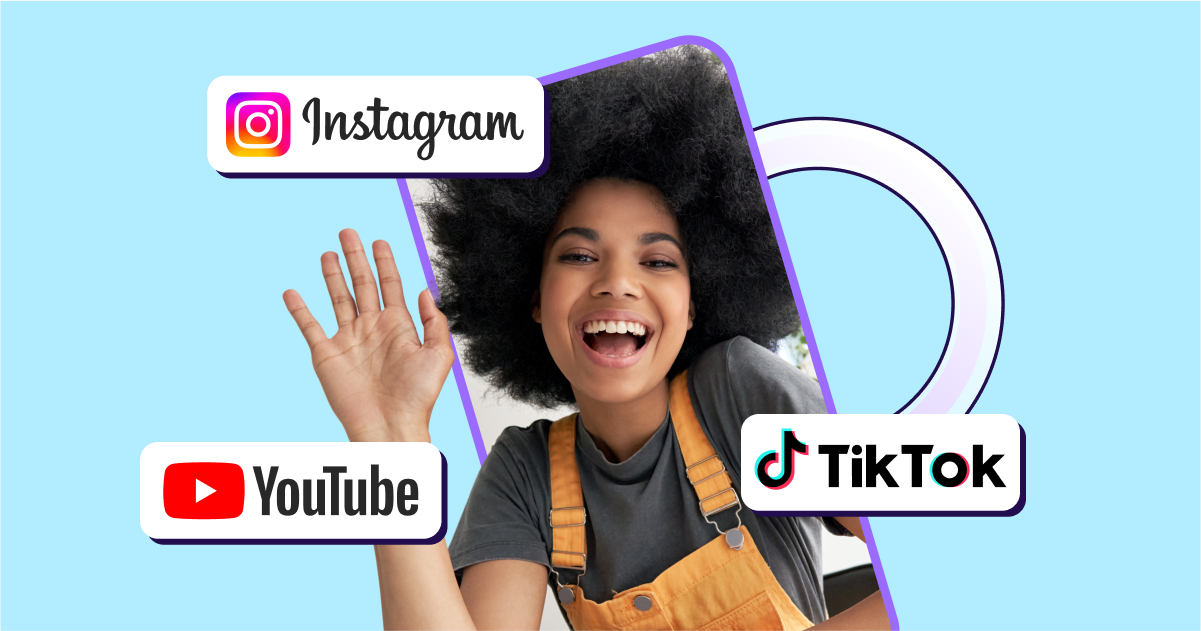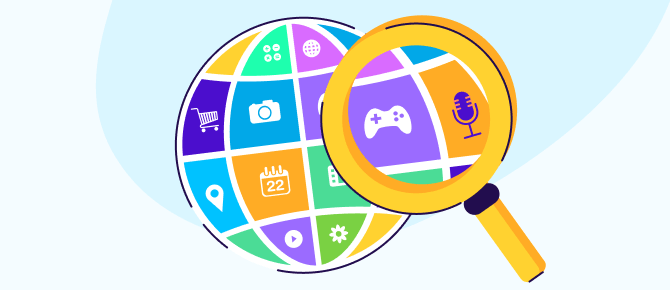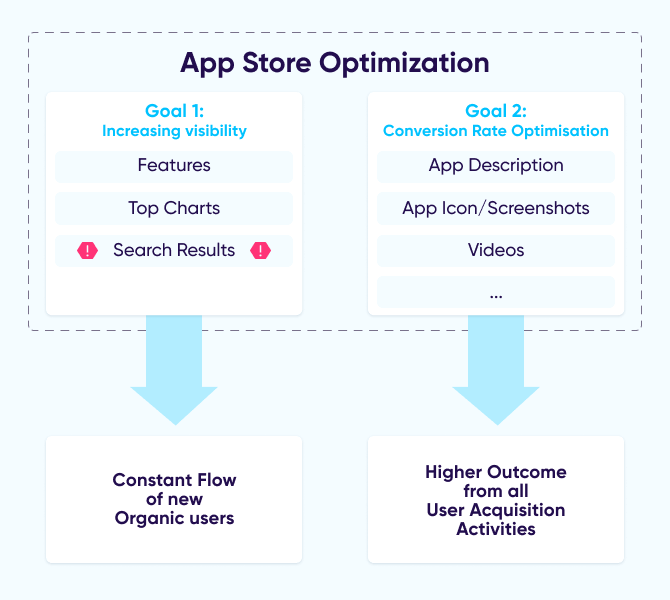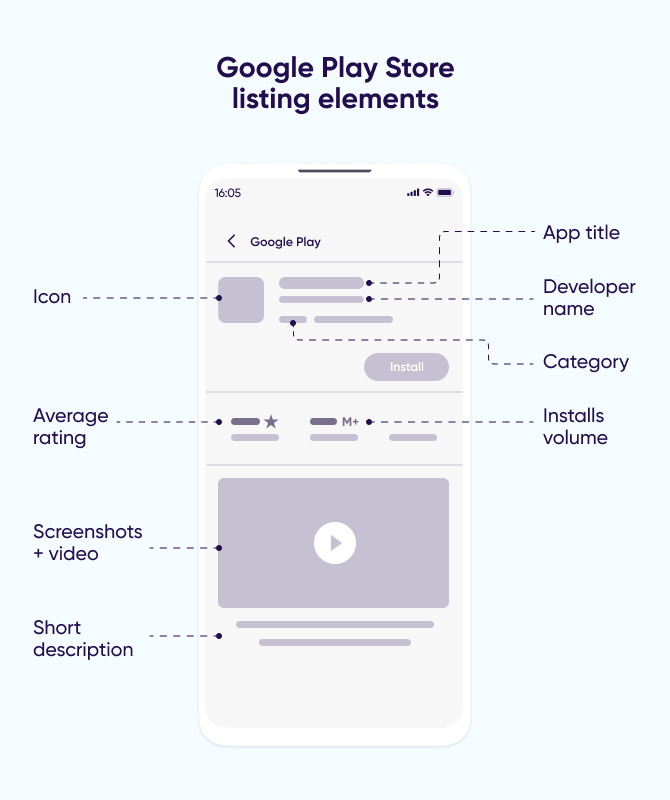
7 tactics to boost your app discovery: How investing in ASO can catapult your app to the next level

In a world where there’s an app for everything humanly possible, how do you get yours to stand out?
Need to track how many calories you’ve eaten today? There’s an app for that. Need someone to clean your home? There’s an app for that. Need to buy a second-hand lamp to match your living room couches? You guessed it – there’s an app for that.
Apps are more popular than ever before. For everyday consumers, a highly competitive app marketplace means higher quality apps to help us with every aspect of our lives.
The market clearly follows the money. Worldwide mobile app revenue is expected to grow from $693 billion to $935.2 billion in 2023.
But what if you wanted to create an app of your own? How will yours rise above the rest in an increasingly crowded marketplace?
That’s where app store optimization (ASO) comes in.
In this post, we’re going to cover everything you need to know to increase visibility and downloads to your app. We’ll go through ranking factors, ASO examples, and best practices so that you can start generating downloads for your app today.
Let’s dig right in!
“If a tree falls in a forest” – Why is app discovery important?
Unsurprisingly, the first step to generating downloads is to let people know your app exists. By mastering ASO and app marketing strategies (that we’ll cover below), you can generate more demand by making your app more discoverable.
While it’s important that you attract a larger audience, it’s equally important to attract the right users that will find value in your app, use it consistently, spend more money on it, and spread the good word to their friends.
Improving discovery means increasing brand exposure, driving more positive app reviews, and improving app engagement. From a business perspective, this leads to lower acquisition costs and higher retention rates – a perfect formula to generate sustainable revenue.
But why is it so hard to get your app discovered?
In the first quarter of 2021 alone, 3.48 million Android apps were listed on Google Play, and 2.22 million Apple apps for iOS users on the App store. The app market is becoming more competitive for the following reasons:
- Technology is becoming increasingly more accessible. As more consumers get access to smart devices, the demand and market for apps will continue to grow.
- With the advent of online hiring marketplaces, international app developers are becoming more readily available around the world. It’s easier than ever to find the top programming talent in countries like Ukraine, Bangladesh, Japan, Taiwan, and Argentina. Having access to international talent has enabled companies to hire at scale with smaller budgets than if they had to hire locally.
- No-code software is making app creation easier than ever. Entrepreneurs without any coding knowledge now have access to creating apps from scratch within weeks without having to invest in expensive developers. The smaller barrier to entry means more apps in the marketplace.

Enter app store optimization (ASO) – What is it and how to make it work for you?
ASO, also referred to as app store marketing and mobile app SEO, is the process of optimizing a game or application to maximize its visibility, and improve conversion rates to generate organic downloads. .
Very similarly to how websites can rank higher on Google with search engine optimization (SEO), apps can leverage ASO in the relentless battle to bump up their search results ranking in app stores.
In the ins and outs of the “popularity algorithm” – How does ASO work?
With millions of apps fighting for attention on the front page of their respective app stores, Google Play, Apple App Store, Amazon App Store, and Windows App stores all use proprietary algorithms to help sort through the noise and present the most relevant apps based on your search criteria.
While the specific algorithms aren’t public knowledge, ranking factors are well-tested.

App store ranking factors for iOS applications
- App name: Placing a keyword here carries the most ranking influence. You may use up to 30 characters.
- App subtitle: A new introduction to IOS 11, keywords also play a significant role here. You may use up to 30 characters.
- Keyword field: Use up to 100 characters to specify your most critical keywords.
- In-app purchases (IAPs): Your IAPs are indexed in search and add valuable real estate to your listing so you take up more space as a search result. The display name can be up to 30 characters and the description up to 45 characters. You may add keywords in your IAP description using natural language, and it’s highly recommended to include eye-catching images to improve click-through rates.
- Ratings and reviews: Your app ratings and reviews are highly visible on the app store, right below the subtitle. When users are considering downloading your app, this is often the first thing they see. One of the best ways to optimize this section is to encourage your loyal users to rate your app by offering some sort of an incentive.
- Update frequency: it’s critical to constantly fix and address bugs that users experience and report. Be sure to document the changes in every update to send signals to the algorithm that you’re regularly updating your product and services.
Downloads and engagement: Uninstalls and low usage metrics are the biggest indicators of your app’s quality. Experiment with in-app rewards, push notifications, and email notifications to keep your users engaged and on the platform.

Google Play ranking factors for Android applications
- App title: Up to 50 characters, placing a keyword here carries the most ranking influence.
- Short description: Up to 80 characters, this is the copy that appears above the fold in the Google Play Store, which carries the second most ranking influence. While this may not directly affect rankings, eye-catching copy can definitely improve conversion rates.
- Long description: Use up to 4,000 characters to describe your app’s best features, where you can use your main target keyword 3 to 5 times. Be sure to localize the description for all possible languages, and use bullet points to make your description more digestible. Don’t forget to add your trust symbols such as awards, and number of 5-star reviews. When it comes to the “don’ts”, here are a few things Google says to avoid.
- In-app purchases (IAP) titles: You may use up to 55 characters and include your keyword once.
- Package name: Add your target keyword into your URL when uploading your app to Google Play. Keep in mind that the package name is permanent and can not be altered in the future.
- Ratings and reviews: Google crawls and indexes reviews for keywords. When responding to positive reviews, ensure you repeat the keyword in your answer.
- Update frequency: Like the iOS App Store, be sure to consistently address and fix bugs that users experience, and then document the changes in every update to send signals to the algorithm that you’re regularly updating your product and services.
Downloads and engagement: Just like the iOS App Store, poor usage metrics will hurt your search rankings. Experiment with in-app rewards, push notifications, and email notifications to keep your users engaged and on the platform.
ASO for mobile marketers: Kickstart your organic app downloads
7 tactics to boost your app discovery
Now that you’ve mastered ASO, let’s dive deeper into different strategies to increase awareness and downloads to your app:
1. Conduct keyword research
It’s impossible to rank for every keyword in your category. Effective keywords provide information about your core users’ needs and the unique value your app provides. We can break down your target keywords into four categories:
- Problem keywords: what are the users’ biggest problems?
- Feature keywords: what is your unique selling proposition (USP)?
- User keywords: what are the main demographics and key interests of your users? For example, your app can be built for football fanatics or young investors, which call for very different targeting approaches.
- Location keywords: where are people using your app? This can be divided by countries, cities, or general locations like your home, office, park, or even subway station.
- Action keywords: what is the user doing when using your app?
For an in-depth explanation of how to conduct effective keyword research, read our ASO guide for mobile marketers.
2. Explore paid user acquisition strategies
User acquisition (UA) is the method of driving new users to a mobile app through marketing activities. Let’s explore a couple of platforms that enable proven and effective UA:
Instagram and Facebook ads
Instagram is the 4th most popular mobile platform, where the vast majority of users are using the app on their mobile devices. Downloading apps through Instagram is a seamless experience, making it one of the most effective ad platforms for mobile apps. You can experiment with a plethora of creative options including stunning in-stream video ads, static ad carousels, and even interactive polls on Instagram stories.
On top of this, you can leverage Facebook’s vast advertising capabilities. Be sure to choose the “App Installs” objective and experiment with different calls-to-action including: install now, download, learn more, book now, play game, and more.
3. Tap into mobile ad networks
Ad networks connect app advertisers to publishers (aka apps that host ads), aggregating ad space supply from them and matching it with advertiser demand. While there are many to choose from, the AppsFlyer Performance Index is a trusted way to identify which ad networks have been proven to be most effective for mobile advertisers.
4. Invest in App Store ads
Whether it’s showing up on the search tab or specific search results, consider advertising directly on the App Store. The biggest benefit to App Store advertising is user intent. You can target people who are actively searching to download new apps, and be able to strike when the iron is hot.
5. Leverage social media & influencers
Influencer marketing is only getting started. Nearly 40% of Twitter users claim that they’ve made a purchase as a “direct result of a Tweet from an influencer.”
If you’re just starting out, distribute promo codes & referral codes to micro-influencers to post about your app. Micro-influencers are usually more receptive to working with brands as they build up their portfolio, and are extremely effective in communicating to their respective communities.
At the end of the day, content is king. Provide content guidelines, but don’t forget to let the influencers drive the creatives and enable them to speak in their unique tone of voice, which resonates best with their audience.
6. Get featured in top charts & Discover page
The front page of the app store reaches millions of users ready to download apps every day. For the App Store, editors choose their favorite apps in the Discover section of the store. They often include in-depth stories, and behind-the-scenes interviews to help highlight the best apps out there.
As you would imagine, being featured is no easy task. Here’s what Apple says you need to have to crack the coveted “featured” nut:
The 7 factors for getting featured on the App Store:
- UI Design
- User experience
- Innovation
- Uniqueness
- Accessibility
- Localization
- App Store product page
The 8 additional factors for getting your game featured on the App Store:
- Gameplay design
- Art and animation
- Controls
- Story and characters
- Replayability
- Sound effects and music
- Technical performance
- Overall value
SEO & organic mentions online
While Google notoriously claims that links and social mentions don’t affect rankings, there is evidence that refutes this claim. Generally, the more press and buzz you generate on social media from authoritative personalities and sources, the more positive signals Google receives about your app. So it’s true when they say Google is always listening!
Key takeaways
Now that you’ve gathered the knowledge to get your app discovered to the right audiences, let’s summarize what we learned:
- Prioritizing ASO to improve your app listing is a long, but rewarding process that can drive business results including lower user acquisition costs and higher retention rates.
- The key to sustainable growth is attracting a larger audience while targeting users who will engage with your app. Investing in the keyword research process can help you achieve that goal.
- Don’t force content guidelines on influencers. Instead, allow them to create their own creative vision and amplify their own tone of voice that relates best to their audience.
- Advertisers and publishers are connected through ad networks, which aggregate ad space supply. In the vast world of ad networks, AppFlyer Performance Index is an effective way to identify the most effective ad networks for mobile advertisers.




